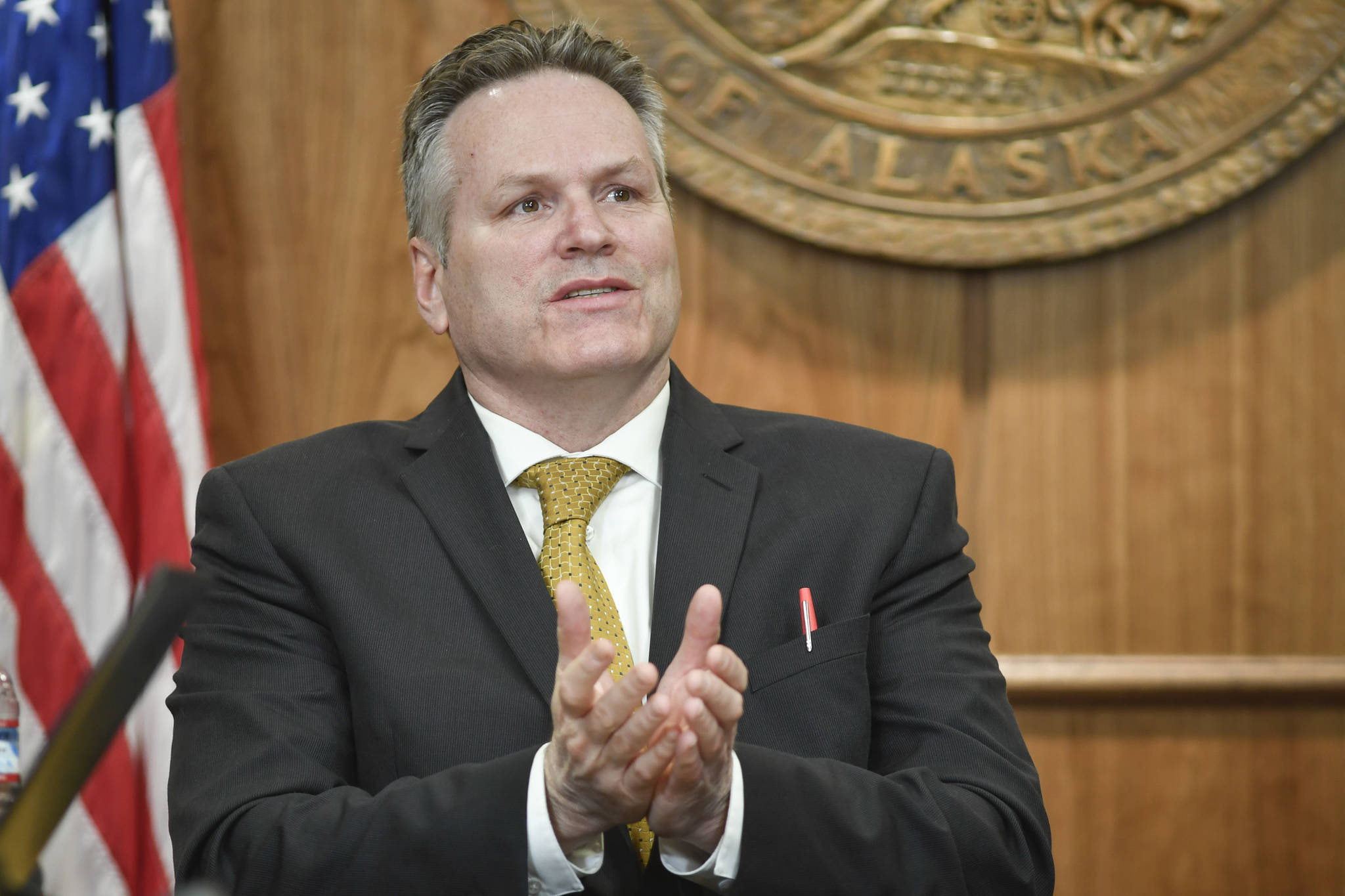1. Governor’s budget cuts
Wide-sweeping, deep cuts to the state budget, at the hands of newly elected Gov. Mike Dunleavy, dominated headlines across the state this year. When Dunleavy unveiled his budget in February, he proposed cutting $1.6 billion from the state’s operating budget, without proposing any new revenue streams, in order to balance the state’s deficit, while also promising a “super-sized” Permanent Fund Dividend. The Alaska Legislature responded by passing the smallest state budget in over a decade — $4.4 billion, which was about $190 million lower than the year prior’s budget but about a billion dollars more than Dunleavy’s proposed cuts — only to be met with Dunleavy’s red pen. In July, he line-item vetoed about $400 million, sparking outrage and concern among Alaskans worried about dramatic cuts to Medicaid, the university system and education, senior benefits, the ferry system, public broadcasting, job losses and the economy.
Residents responded en masse with protests and a recall effort.
Dunleavy eventually relented to public pressure and walked back some of the cuts, and also let go of his Office of Management and Budget director and chief of staff. In the end, he signed a budget bill that approved $650 million in cuts, representing a roughly 8% spending decrease, or one-third of the state’s deficit. He also allocated a $1,600 PFD amount.
All those numbers affect on almost every single Alaskan. Residents are still reeling from the turmoil, and uncertainty remains about the future of many state-run programs and institutions.
Budget woes and debate are nowhere close to being resolved, as Dunleavy earlier this month called for a full-statutory Permanent Fund Dividend of $3,170 and proposed using the state’s remaining savings account, the Constitutional Budget Reserve, to balance the rest of the budget.
2. The Tongass
If the first half of 2019 was dominated by budget cuts, the second half was dominated by the Roadless Rule.
The decades-old debate over the law — of which Alaska has an exception to protect certain areas of the Tongass National Forest from road construction and logging — roared back to the fore on the local, state and national stage after Dunleavy reportedly asked President Donald Trump to exempt the Tongass from the rule following a meeting on Air Force One.
According to The Washington Post, Trump then instructed Agriculture Secretary Sonny Perdue to exempt the Tongass, and the U.S. Forest Service announced in October it would take public comment on alternatives to the Roadless Rule for a draft environmental impact statement. The service presented a range of alternatives to the rule, many of which would allow timber harvest of old-growth forest, and said that its preferred move would be to lift Alaska’s exception to the rule entirely.
The move immediately proved divisive, and prompted political debate that could be heard at every local grocery store, fishing dock and dive bar. Local conservationists and many others decried the effort, saying it could destabilize the region’s habitat, which fishermen and tourism industries rely on to be pristine, to boost a timber industry that only comprises 1% of the state economy. On top of that, many Alaska Native tribes and communities said they felt left out of the public process. Those in favor of lifting the rule, including Dunleavy and U.S. Sen. Lisa Murkowski, R-Alaska, however, think it would help rebuild the timber industry and help Alaska’s economy.
Throughout the 60-day comment period, which just ended Dec. 17, there was a huge push for those to voice their opinions on the matter.
What will happen next is anyone’s guess, but one thing is certain: this issue isn’t going away anytime soon.
3. Record number of cruise ships
Love ‘em or hate ‘em, there’s more and more tourists arriving in Juneau with no end in sight. A total of 1.3 million cruise ship passengers came through the capital city this year, a 16% jump over last year. A projected 1.4 million are expected to visit Juneau in 2020. A cruise line also bought property downtown on Egan Drive to build an additional cruise ship dock, prompting more questions about cruise ship passenger capacity and how much the future of downtown will change.
For all the changes, 2019 marked the year that Juneau city officials began taking residents’ concerns seriously, and started talking about the impacts that tourism, or overtourism, have on the community.
In February, Juneau embarked on its first study in 17 years examining pollutants in Juneau’s air and installed air monitors downtown. In the spring, neighborhood associations began holding meetings asking questions about “How many tourists is too many?” and bringing those same questions to city meetings. Later in the year, the mayor formed a tourism task force that has given residents a chance to air concerns in front of industry leaders.
Time will tell how beholden Juneau is to such a powerful industry, but 2019 proved that there is space to discuss these issues in a productive way that could lead to change.

